A quick search of Ishikawa will give you images of Kenrokuen Gardens and perhaps the old town area of Higashi Chaya. But when looking for my next adventure in Japan, that was not what caught my attention. Instead, what called out to me was their traditional Japanese craftwork known as Kutani ware.
Kutani Ware (九谷焼 ,くたにやき, kutaniyaki) is a Japanese ceramic or porcelain that is only made in Ishikawa. Lately, I’ve been scurrying down cultural rabbit holes that have anything to do with Japanese crafts or artisanal ingredients. So, when a friend mentioned Kutani ware, and indeed, that you could make it yourself, I instantly looked up ways to get there.
Although there are plenty of reasons to visit Ishikawa and its surroundings, here I’ll take you on a day to explore the art of Kutani ware and even show you where you can get a tasty dinner served on the very ceramic itself.
An Introduction to Kutani Ware and its History
Although there are a few other types of Japanese pottery in Ishikawa, such as Suzuyaki (珠洲焼), Kutani ware is perhaps the most well-known. Whether that’s because of its colourful designs, or the freedom of expression it offers, it’s certainly one of the best kinds of meaningful souvenirs to pick up in the area.
The history of this Japanese craftwork dates back to 1655, but its story is not nearly as smooth as the glazed finish Kutani ware is known for.
In 1655, the first Daimyo feudal lords of what was once called the Daishoji domain (present-day Ishikawa) wanted to make the most of the porcelain stone that had been found in the area. He sent a gold smelter to study pottery in the famous ceramic town of Arita in Saga prefecture, further south. When the gold smelter returned, he opened a kiln in the village of Kutani. This is said to be the origin of Kutani ware’s predecessor, a ceramic now called Ko Kutani.
But for reasons that have eluded to and frustrated historians, the kiln closed down after about 50 years of production.
It wasn’t until 1805 that another kiln was opened. A Japanese craftsman skilled in Kyoto pottery making came to Ishikawa with his apprentice. The apprentice found porcelain stone nearby and used it to kick-start a Kutani revival, the root of modern Kutani ware.
One of the great things about the Japanese craftwork of Kutani ware is that there aren’t many rules to the design, which gives ample room for freedom of expression. But it can be differentiated from other Japanese pottery types by its five signature colours red, yellow, green, purple, and blue. What the artisans do with those colours is pretty much up to them. As for the creation, Kutani ware sets itself apart with its high-quality porcelain stone that can only be found in Ishikawa. If it’s not made in Ishikawa, it’s not Kutani ware!
With all that knowledge under our belts, let’s get onto the Ishikawa adventure!
Visiting Kutani Ceramic Art Village
After an overnight bus on the VIP Liner from Tokyo, I rented a car in Kanazawa and headed straight for the Kutani Ceramic Art Village (九谷陶芸村) in Nomi city (能美市).
The Kutani Ceramic Art Village (also known as Kutani Chinaware Ceramic Art Village) is a small area dedicated to shops selling Kutani ware. In the centre, there’s a large circular monument, and at the end of the shopping street is a Kutani ware Museum.
I visited on a weekday before Japan had started letting in overseas tourists, so I had the entire place to myself. I stepped into a hushed shop filled to the brim with Kutani ware and looked around leisurely.
As far as Japanese pottery types go, traditionally, Kutani ware is mostly decorative. So you’ll certainly find some elaborate designs that fetch a high price, but there are also more items for daily use these days. And Kutani ware isn’t just restricted to plates and bowls. Pretty much anything that can be made with Kutani ceramic can be found in these shops.
If you’re looking for more fine collections of Kutani ware, check out the Kutani Porcelain Art Museum (能美市九谷焼美術館) at the end of the village to see historic examples of Kutani ware and the creative process.
But I had plenty of opportunity to learn about the creative process first-hand by making my very own piece of Kutani ware at the next stop, Cerabo Kutani.
Making Kutani Ware at Cerabo Kutani
A 15-minute drive is Cerabo Kutani, a stylish workshop and educational centre to get a hands-on experience of the region’s signature Japanese pottery.
The building is a work of art itself, and once you enter, you’ll find their workshop to the left and their shop and processing display to the right. The shop area is like a mini museum, with a few stands showing different parts of the Kutani ware process, from stamping the stone to the final decorations. The most mesmerising part is their stamp mill, which you can see working away behind the glass.
I made my way over to my pre-booked session in the workshop and was shown some sample pieces. I settled on the idea of a bowl and was given an apron to sit down by the pottery wheel. The expert craftsman gave me a demonstration before letting me dive in.
He started with an up and down motion to make the clay easier to work with, then pressed his thumbs into the clay to make an indent that would decide the piece’s size. With the wheel turning all the while, he shaped the piece with wet hands and finally cut it from the board with a string.
Trying it myself, I found the process fairly intuitive and was reassured by the craftsman’s presence and friendly attitude in the face of all my questions.
They took it from there and glazed the piece in a shiny white coating before carefully packaging it and sending it to my home. It takes a while to fire and glaze the piece, so their delivery service was much appreciated, as I wasn’t about to get that night bus there again to pick it up! You can also try your hand at decorating if you like.
Ishikawa Sushi Served on Ishikawa Ceramics
We’ve learnt about the past of Kutani ware and how its created, so what better way to round off the day than using it for its intended purpose – as dinnerware!
For that, I headed back to the Kanazawa area for a dinner of temaki zushi (hand-rolled sushi) at Coil.
The minimalist restaurant leaves everything up to you, giving you a menu that simply has images of all its ingredients. You choose a selection of your favourite sushi toppings, and they come out to you on perfect little Kutani ware plates, along with ready-to-roll nori and rice. How much you get depends on what set you order.
I decided to order four fish dishes and two toppings. For the fish, I got mackerel, salmon, yellowtail, and my weakness at sushi places, shrimp tempura. I followed this with some shiso leaves and red cabbage because I was intrigued by the flavour combinations.
The Kutani ware plates had been chosen carefully to bring out the colours of their ingredient, as the reds in the plate highlighted the reds of the yellowtail and the cabbage.
I tried out different combinations with my four sushi rolls, and with each one, I got slightly better at rolling. The red cabbage went well with the yellowtail and the tempura, but the shiso’s brighter notes offset the salmon’s fattiness and mackerel much better. I’ll admit I never find sushi all that filling, so I stopped by a Mister Donut nearby before heading off! It was the perfect sweet ending to a day of exploring Ishikawa’s porcelain heritage and sampling its seafood.
Other Things to Do in and Around Ishikawa
Having travelled as far as I had on that long night bus, I spent a few days in the area after my exciting affair with Kutani ware.
While in the area, I explored the Higashi Chaya district in Kanazawa, known for the famous Kenrokuen Garden, considered one of the three most beautiful gardens in Japan and its lavish gold products, and where I tried some gold leaf ice cream.
This seemed like the perfect opportunity to take my rental car to Shirakawago, a UNESCO world heritage site and the fairy-tale village of traditional thatched farmhouses I’d heard so much about. I felt almost like I had stepped back in time, walking through the quaint streets surrounded by mountains high above.
That’s where my Ishikawa adventures ended, but there’s so much more to do in the area. I hope to one day visit during winter to go skiing in the Hida area or see the snowy landscapes of Toyama.
Access to Ishikawa
Whether visiting Ishikawa from Kyoto or Tokyo, the easiest way to get there is by Shinkansen (bullet train) to Kanazawa Station.
Tokyo to Ishikawa
It takes around three hours from Tokyo Station to get to Kanazawa Station on the Hokuriku Shinkansen.
Kyoto to Ishikawa
From Kyoto Station, the Thunderbird limited express takes just over two hours and stops at both Kanazawa Station and Komatsu Station, near Cerabo Kutani.
However, the night bus is the cheapest option (that doesn’t involve local buses and a million changes). There are various night buses out there.
I decided to take the significantly cheaper night bus option from Tokyo. I used the VIP Liner, and it was a pretty comfortable experience, so I recommend it if you don’t want to shell out for the bullet train. Ishikawa is the easiest to explore if you rent a car, and there are a few rental spots near Kanazawa Station. But to get to Komatsu and the ceramic art village by public transport takes around an hour by train and then bus.
A Region Filled with Hidden Treasures
Ishikawa is not always the first place that comes to mind for travellers in Japan, but it’s certainly worth exploring. Here I’ve only covered a single day in the area, and one element of the culture at that. But so much history, food, and cultural sights await you in this coastal prefecture. And don’t forget the gold-leaf cuisine, either! If you’re looking for a trip to explore the cultural side of Japan without the huge crowds, Ishikawa is the place to go.
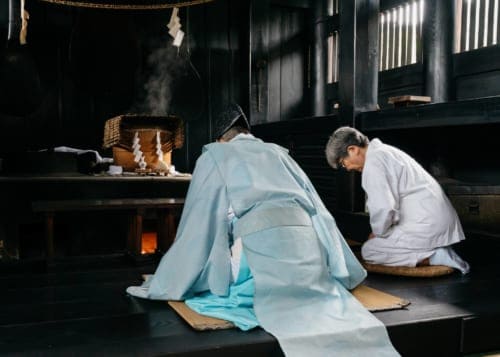
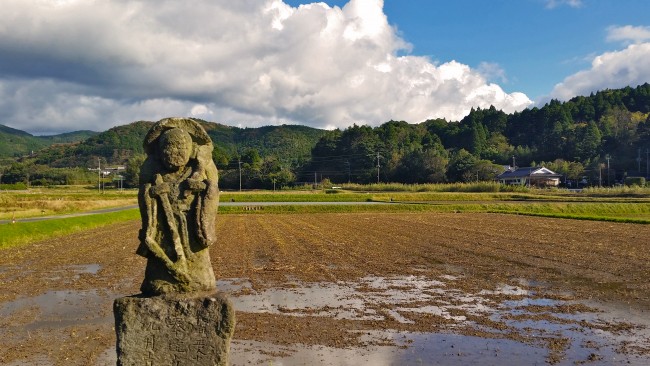
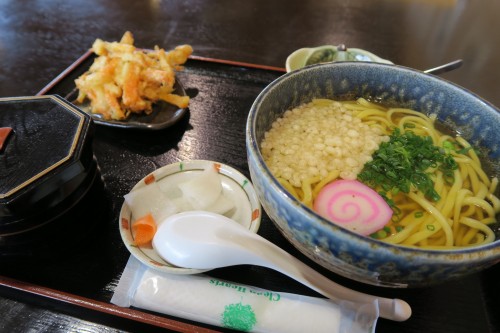
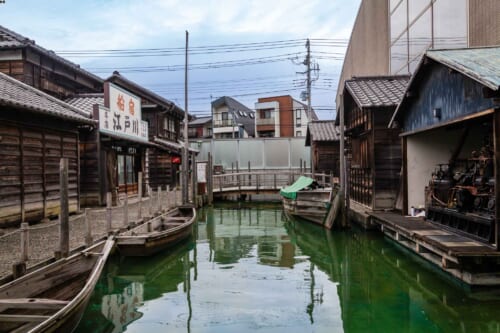
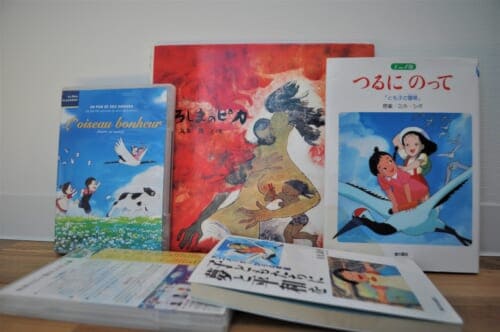


No Comments yet!